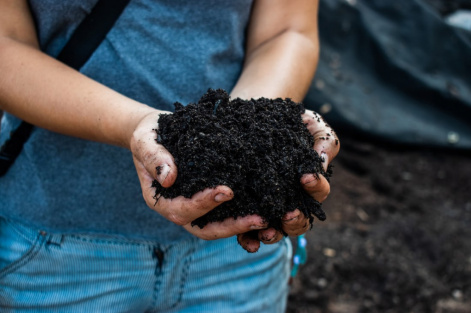Biotest based on luminous bacteria will assess the contamination of urban soils
7 December 2021 г. FRC KSC SB RAS

Soil pollution is one of the global environmental problems. It is especially acute in cities and their environs, where industrial and automobile emissions and other wastes get into the soil. Contaminated soil causes serious social and environmental problems. For the purpose of operational monitoring, simple and informative methods for assessing the ecological state of the soil are required.
Scientists of the Federal Research Center "KSC SB RAS" and Siberian Federal University have developed a biotest based on enzymes from luminous bacteria to predict soil toxicity. The test results depended not only on the amount of pollutants in the samples, but also on the characteristics of the soil itself. To obtain more accurate and reliable data, the researchers supplemented the enzyme biotest with software.
The biotest is based on a combined system of two enzymes, oxidoreductase and luciferase, isolated from luminous microorganisms in the laboratory of nanobiotechnology and bioluminescence of the Institute of Biophysics, SB RAS. The biotest detects changes in the intensity of the luminescence of enzymes under the influence of toxic impurities. Luminescence suppression is proportional to the amount of toxic substances in the samples. Enzymatic biosensors are characterized by fast analysis, specificity and sensitivity.
Common pollutants often found in cities are fluoride, arsenic and lead. Scientists decided to test the effectiveness of their biotest on soils just with such contaminants. The results showed that the sensitivity of the biosensor depended not only on the concentration of the toxicant in the soil, but also on the properties of the studied soil samples. To obtain more accurate results, it was necessary to take into account the chemical characteristics of the soil and its granulometric composition.
Scientists realized that they lacked the tool to interpret the results obtained from studying such complex and multicomponent samples. Then, the researchers developed specialized software for the enzyme biosensor. It is intended to simplify the interpretation of the results when studying such a complex multicomponent and multifunctional medium such as soil. The program contains data on several dozen reference soil samples, divided into typical categories, and their inhibitory effect on enzyme systems of varying complexity. This approach makes it possible to reveal the background effect of soil on enzyme biosensors.
“The appendix contains information on the characteristics of standard soil samples and the effect of aqueous extracts from these soils on enzyme systems. This is the background inhibitory effect on biosensor components. Knowing these values and excluding them from the measurement results, we obtain an estimate of the contamination degree of the soil sample. The developed software and biotest can find wide application in environmental monitoring,” said Alexander Shpedt, Doctor of Agricultural Sciences, Director of the Federal Research Center of KSC SB RAS, who is also one of the co-authors of the study.
The research was supported by the Russian Foundation for Basic Research, Government of the Krasnoyarsk Region, Krasnoyarsk Regional Science Foundation, and Ministry of Science and Higher Education of the Russian Federation.
Share:
